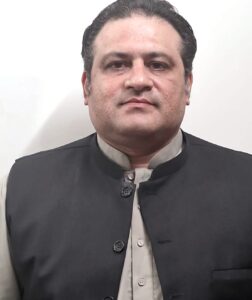A Remarkable Journey Toward Financial Growth and Stability: Punjab’s Budget 2025-26
The budget is an essential financial instrument that significantly influences the economic planning and growth of any country. The budget functions as a strategic framework for resource mobilization, spending allocation, and the attainment of socio-economic goals. It signifies the government’s aims, objectives, and strategy toward public welfare, development, and budgetary responsibility. Initially, the budget facilitates the prudent distribution of limited resources among diverse sectors, including education, health, agriculture, infrastructure, and social welfare. Punjab, as Pakistan’s most populated and agriculturally prolific region, requires a balanced strategy to foster both rural and urban growth. The budget guarantees sufficient funds for essential sectors to enhance service delivery and elevate the population’s living standards. Strategically allocated development expenditures within the Annual Development Programme (ADP) facilitate sustained growth by tackling structural issues.Furthermore, The budget improves budgetary transparency and accountability. Through the presentation of yearly income and spending plans, the government communicates its financial management to the public and legislature, facilitating scrutiny and fostering public trust. It establishes explicit objectives for revenue production (e.g., from taxes, non-tax sources, and federal payments through NFC), which are crucial for diminishing reliance and enhancing provincial autonomy. Moreover, in a province such as Punjab, characterized by increasing urbanization and social needs, the budget functions as an instrument for fairness and inclusion. The budget can mitigate gaps and assist disadvantaged groups through subsidies, health cards, free education programs, and housing schemes.
The overall expenditure of the Punjab budget for the fiscal year 2025-26 is Rs. 5.335 trillion (about US $19.2 billion), marking the highest budget in Punjab’s history. The government intends to increase revenue through compliance and digitization, without imposing new taxes or increasing existing tax rates. The allocation for the Annual Development Programme (ADP) is Rs. 1.240 trillion, reflecting a remarkable 47% growth from the last Rs. 842 billion, financing over 850 development initiatives across various sectors. Non-development/Current Expenditure is projected at Rs. 2.706 trillion, encompassing wages, pensions, and administrative costs, reflecting a small increase of 6%.
The entire allocation of funds for the education sector is Rs. 809 billion, comprising Rs. 148 billion for development and Rs. 661 billion for operating costs. Key initiatives in the education sector include the distribution of 112,000 computers under the CM Laptop Scheme, with a budget of Rs. 15.1 billion. Rs. 15 billion allocated for the Merit Scholarship Program. Funding for higher education and special education amounts to Rs. 25 billion and Rs. 5 billion, respectively. Rs. 7 billion for school nutrition programme.
Allocation for health budget is Rs. 630.5 billion (Rs. 450 billion current expenditure and Rs. 181 billion development allocation), reflecting a 17% increase. The major initiatives include the Universal Health Insurance Scheme (Rs. 25 billion), the Chief Minister’s Children Heart Surgery Program (Rs. 3.2 billion), the Nawaz Sharif Cancer Institute and Medical District in Lahore (Rs. 14.5 billion plus Rs. 61.3 billion for development), and the budget designated for free medicines (Rs. 79.5 billion). In conjunction with the province new universal ‘Sehat Card’ project, a coverage of Rs. 10 lakhs will be provided to 6.5 million families, with an allocation of Rs. 778 crores.
Funds designated for transportation projects include the E-taxi program (Rs. 3.5 billion), electric buses (Rs. 46 billion), local road development (Rs. 50 billion), and mass transit systems in Faisalabad, Lahore, and Gujranwala (Rs. 30 billion). The allocation for housing and urban water budgets includes the “Apni Chhat” housing plan (Rs. 150 billion), the Saaf Pani rural program (Rs. 5 billion), and wastewater treatment in Lahore (Rs. 73 billion). Rs. 5 billion has been allotted for the Chief Minister’s IT Park. The budget allocation for emerging technologies includes Rs. 175 million for AI and governance efforts, and Rs. 180 million for internships.
10% wage enhancement for government employees and a 5% enhancement in the pensions of retired employees. The social security package amounts to Rs. 70 billion, and the minimum salary has been set at Rs. 40,000 per month. The agriculture budget is allotted Rs. 129.8 billion, reflecting a 10.7% increase, which includes support for water-efficient farming, Green Tractor Scheme amounting to Rs. 15.5 billion, shrimp aquaculture in Muzaffargarh at Rs. 8.34 billion, and the Green Pakistan Initiative with Rs. 20 billion. Agricultural loans amount to Rs. 66 billion, while irrigation funding totals Rs. 37.96 billion. The budget designated for roads and bridges is Rs. 120 billion.
In conclusion, the budget serves not just as a financial statement but also as a strategic document that propels Punjab’s economy towards sustainable growth, social equity, and enhanced governance. An effectively structured and executed budget is crucial for attaining the province’s overarching development objectives and fostering national economic stability. The Punjab Budget 2025–26 introduces an unprecedented, tax-exempt, and strategically advanced budgetary framework. The government allocates Rs. 1.24 trillion to development, enhances social and human capital sectors, and maintains low deficits, so establishing itself as both welfare-oriented and economically responsible.
Written by: Haseeb Zaidi






Comments are closed, but trackbacks and pingbacks are open.